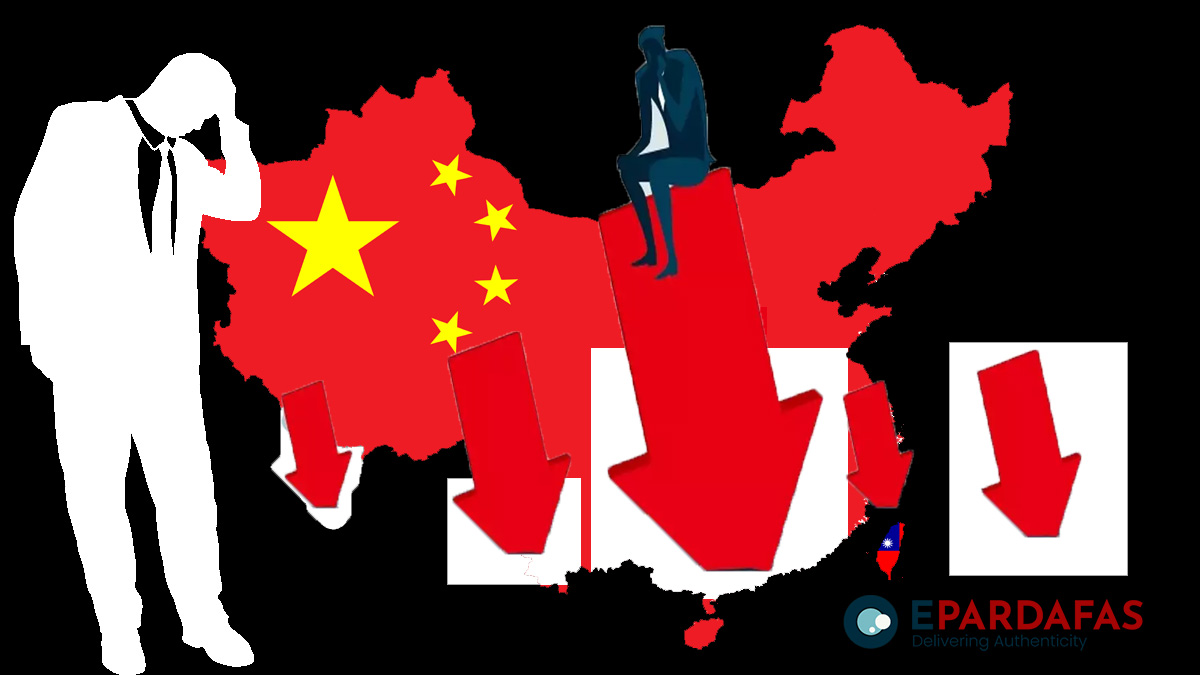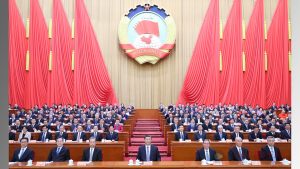
China’s Shaky Economic Rebound
The Chinese economy recorded an annualized growth rate of 6.3% in April-June quarter of 2023, much slower than the projected growth rate of 7%. The Moody’s Analytics economist Harry Murphy Cruise described the less than projected growth rate for the previous quarter as “worrying result.” Even this growth rate was possible due to a low base growth rate of just 0.4% in April-June of 2022 amid strict lockdowns in Shanghai and other cities during Covid-19 outbreaks.
Although the Chinese government had forecast earlier a growth target of around 5%, the analysts felt it was an underestimate given the resumption of consumption as evidenced by huge crowds in marketplaces after Covid-19 restrictions were removed in late 2022. Many of them believed that the Chinese economy might grow at a higher rate. The April-June quarter annualized growth of 6.3% is higher than 4.5% of January-March quarter, but there are many things that indicate weakness in the Chinese rebound.
The hopes of high economic growth of China have been belied due to several factors. In June, exports declined 12.4% from a year earlier as global demand faltered after the central banks in America and Europe raised interest rates to curb inflation. Even the growth rate in retail sales was unsatisfactory, remaining just 3.1% in June 2023 from the same period in 2022. The growth rate of 3.8% in the fixed asset investment for the first half of 2023 was not adequate to spur the desired economic recovery of China.One of the main driving engines of the Chinese economy, industrial growth performed better than expected, yet it was not as great as the sustained economic recovery required. Industrial output, which measures activity in the manufacturing, mining and utilities sectors recorded a growth of 4.4% in June compared to the same month a year earlier.
China’s quarterly growth in April-June quarter of 2023 stood at 0.8% which was sharply down from 2.2% in Jan-March quarter of 2023. The other signs in the Chinese economy did not present a rosy picture. Investment in property development declined by 7.9% for the first half of the year, unemployment of young people aged 16 to 24 rose to a record 21.3% in June, up from 20.8% in May.
The Chinese officials have acknowledged that the economy is facing stiff headwinds and the government would adjust policies to stabilize growth so as to achieve at least the target of 5% annual growth in 2023. But analysts have warned that even if government spending is likely to help key industries including real estate and construction, it won’t be a “silver bullet”. Marcella Chow, global market strategist at J.P Morgan Asset Management suggested that an escalation in policy support would be needed to stabilize expectations. Apart from government spending, regulators may cut interest rates and take other measures to free up credit so as to buoy the economy.
Meanwhile some analysts have conjectured that China might face a deflation due to weak demand. The inflation rate for consumer prices in China flattened in 2023, missing market expectations and May’s figure of a 0.2% rise. This was the lowest reading since a deflation in February 2021, mainly due to a decline in non-food prices. The producer price index also fell 4.6% in May, marking the steepest year-on-year drop in seven years, when producer prices saw a year-on-year drop of 7.2% in May 2016.
The worsening economic situation and rising unemployment are breeding discontent among the youth. According to recent posts that are circulating in China, a university is going to be organized in Chengdu against CCP’s stringent control and restriction from July 28 to August 8 in which people are expected to participate in flash mobs. However, these posts have warned the participants about sharing their personal information and sensitive content on electronic devices. They have also suggested avoiding physical attendance for the fear of plain cloth police.
Over the past three decades, China’s growth has underpinned the global economy as it has remained the main driver of growth. But a weak Chinese economy is a matter of worry. Articulating the risk, Kim Chalmers, Australia’s top economic minister Chalmers said, “The global economy is in a pretty precarious place right now. The Americans are proving to be resilient; the Chinese economy has shown some worrying signs, Europe is in recession and others as well.” The Fitch Ratings described recent Chinese GDP data as a “swiftly fading rebound” but expressed the hope that annual growth in 2023 would remain above the government target of 5%, albeit on a slowing trajectory at 4.8% in 2024 and 4.7% in 2025.
















Comments